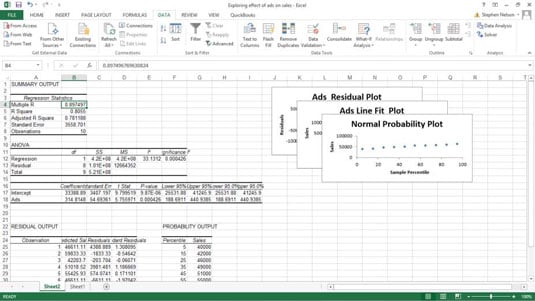

For computing, you have the choice of using Microsoft Excel or the open-source, freely available statistical package R, with equivalent content for both options.

This course combines lecture videos, computer demonstrations, readings, exercises, and discussion boards to create an active learning experience. In particular, the Bayesian approach allows for better accounting of uncertainty, results that have more intuitive and interpretable meaning, and more explicit statements of assumptions. We will compare the Bayesian approach to the more commonly-taught Frequentist approach, and see some of the benefits of the Bayesian approach. We will learn about the philosophy of the Bayesian approach as well as how to implement it for common types of data. Also, I discovered that LINEST only seems to work if the X and Y data are in columns (not rows), with no empty cells within the range, so be aware of that if you get a #VALUE error.This course introduces the Bayesian approach to statistics, starting with the concept of probability and moving to the analysis of data. I did notice that the three coefficients are very close but not quite identical to those derived by using the graphical trendline feature under the charts tab. Lastly, in the next cell over, again type the same formula but change the last number to a 3. In an adjacent cell, type the same formula again but change the final 1 to a 2.

of course you'd change these ranges appropriately to match your data). Using the formula: =LINEST(B2:B21, A2:A21^1.2)Įxcel's LINEST function can also calculate multiple regressions, with different exponents on x at the same time, e.g.: =LINEST(B2:B21,A2:A21^,TRUE,FALSE),1) (by the way, the B2:B21 and A2:A21 I used are just the same values the first poster who answered this used. You can also use Excel to calculate a regression with a formula that uses an exponent for x different from 1, e.g. Which returns a single value, the linear slope ( m) according to the formula: You need to use an undocumented trick with Excel's LINEST function: =LINEST(known_y's,, , )Ī regular linear regression is calculated (with your data) as: =LINEST(B2:B21,A2:A21)


 0 kommentar(er)
0 kommentar(er)
